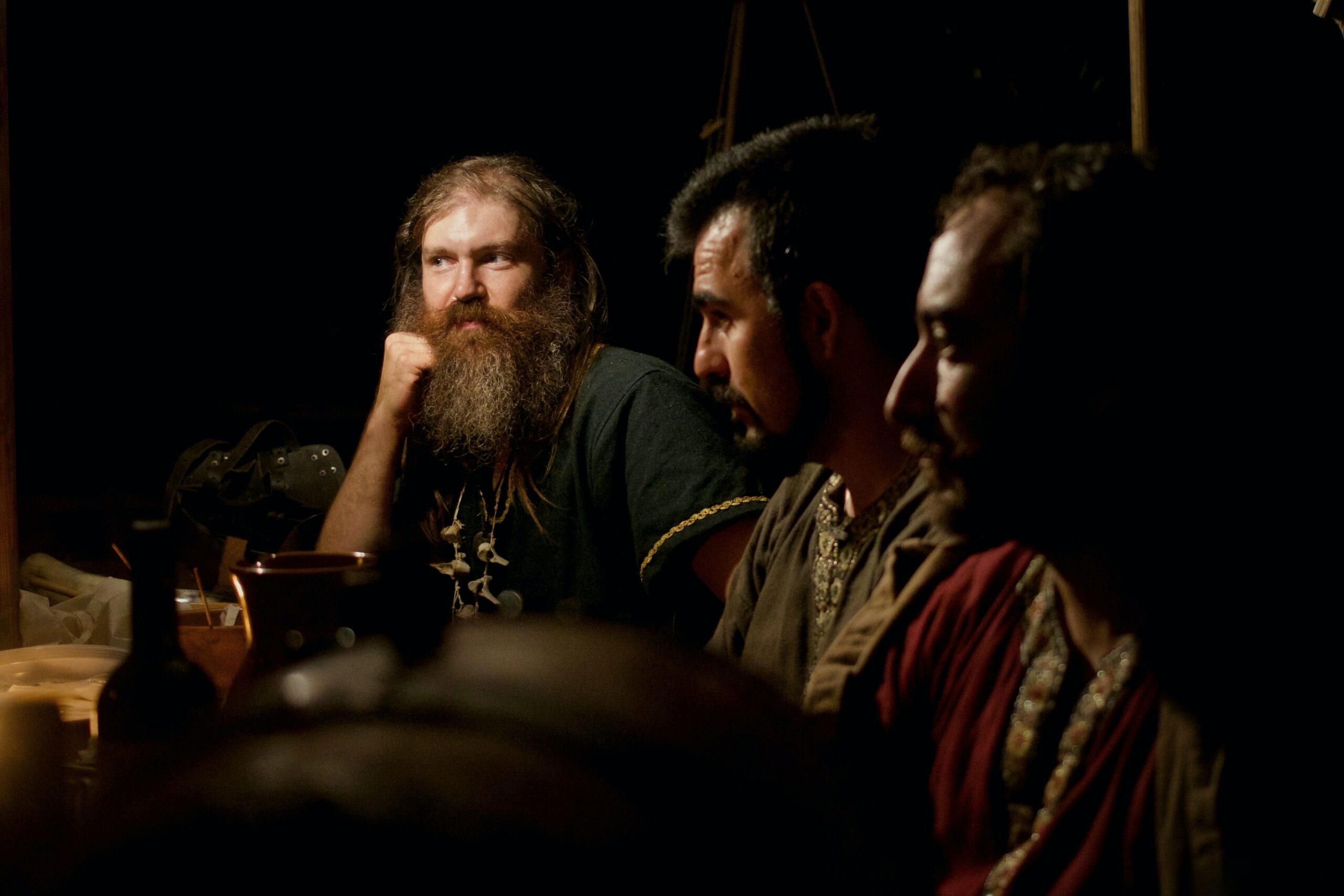Viking clothing was made from natural materials such as wool, linen, and animal skins. The Vikings lived in a cold climate, so their clothing was designed to keep them warm and dry. They also had a practical and functional approach to clothing, with a focus on durability and ease of movement.
Men’s Clothing:
Viking men typically wore a long shirt or tunic made of wool or linen, which was worn over a pair of woolen trousers. The shirt was belted at the waist and often had long sleeves that could be rolled up if needed. In colder weather, a cloak made of wool or animal skin was worn over the tunic for added warmth. The cloak was held in place by a brooch or pin.
Footwear for men consisted of leather shoes or boots that were often reinforced with metal studs or hobnails to make them more durable.
In battle, Viking men wore chainmail shirts or leather armor for protection. Helmets were also worn to protect the head, and many helmets featured a nose guard or face mask for additional protection.
Women’s Clothing:
Viking women wore a long dress made of wool or linen, which was often embellished with embroidery or other decorative elements. The dress was typically held in place by a belt that was worn at the waist. In colder weather, a cloak made of wool or animal skin was worn over the dress for added warmth.
Viking women also wore a head covering called a “hufa” or “kyrtill” which was similar to a hood or scarf and could be pulled up to cover the head and neck.
Footwear for women consisted of leather shoes or boots that were often decorated with embroidery or other decorative elements.
Jewelry and Accessories:
Both men and women wore a variety of jewelry and accessories. Brooches and pins were used to fasten cloaks and tunics in place, and belt buckles were used to secure the waist. Necklaces, bracelets, and rings were also popular.
Viking women often wore a string of beads around their necks or wrapped around their heads, and these beads were often made from amber or other precious materials.
Viking men often wore arm rings or torcs, which were made from silver or gold and were a symbol of wealth and status.
Overall, Viking clothing was practical and functional, designed to keep the wearer warm and dry in a harsh climate. The clothing was also well-suited to the Vikings’ active lifestyle, allowing for ease of movement and durability. The Vikings also placed a high value on personal adornment, with both men and women wearing a variety of jewelry and accessories to show their wealth and status.
